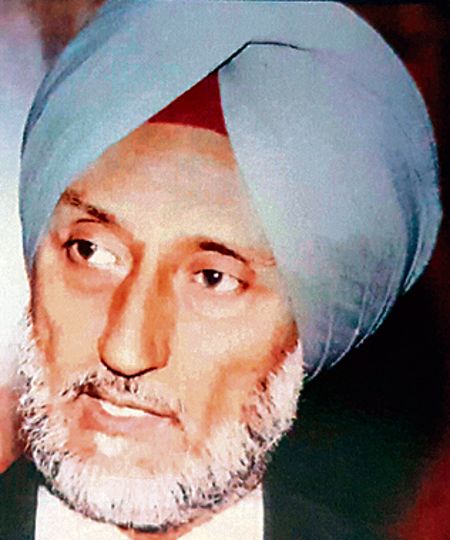And that idea got further reinforced with Jawaharlal Nehru’s visit to mainland China shortly after. Perhaps, herein also lay the seeds of Nehru’s latter days’ optimism in the spirit of “Hindi Chini Bhai Bhai” and who could fault him but narrow-minded sceptics? However, what followed a mere two decades later was to belie every vestige of the hoped-for fraternity between Asia’s two ancient civilisations.


For the benefit of India’s post 1970 generations, it may be pertinent to recount briefly the history leading to the emergence of both India and China as sibling Republics, in 1947 and 1949, respectively, after years of long and bitter struggles against their respective entrenched orders. While India’s freedom movement was anchored by Mahatma Gandhi around the ideology of non-violence, that of China was coloured by a full-blown war against the Japanese invasion in 1938 followed by a decade of a bloody civil war during the PLA’s “Long March”.
There was no formal unity of purpose between these two countries, yet there existed a sense of unstated sympathy for each other’s cause. So much so, that in 1938, Chinese General Zhu De made a formal request to Jawaharlal Nehru for a team of physicians to manage their mounting battlefield casualties. The Indian National Congress promptly appealed through a press statement, resulting in five volunteer medicos: M Atal from Allahabad, M Cholkar from Nagpur, DS Kotnis from Solapur, BK Basu and Debesh Mukherjee from Kolkata. Additionally, one donor provided an ambulance and the All-India China Day Fund peaked at Rs 22,000!
On arrival at the Chinese port of Hankou, they were transported to Yan’an, to be welcomed personally by Mao Zedong, Zhu De and other top leaders of the Communist Party because it was “help from a nation itself struggling for freedom, to another nation also struggling for its freedom.” And that idea got further reinforced with Jawaharlal Nehru’s visit to mainland China shortly after. Perhaps, herein also lay the seeds of Nehru’s latter days’ optimism in the spirit of “Hindi Chini Bhai Bhai” and who could fault him but narrow-minded sceptics?
However, what followed a mere two decades later was to belie every vestige of the hoped-for fraternity between Asia’s two ancient civilisations. Within days of the proclamation of the People’s Republic of China in November 1949, the restive PLA first flexed its muscles to ignite war on the Korean peninsula and, in 1952, switched gear to annex Tibet (for eons a sovereign country) with the motherland. So, by a wicked twist of destiny, what for several centuries had been the acknowledged and open Indo-Tibet boundary was to metamorphose by 1954 as the bitterly, ongoing, disputed Sino-India border.
China’s aggressive intents were fairly well read both by Prime Minister Nehru and the Home Minister, Sardar Vallabhbhai Patel. But sadly, the downsized Indian Army, post WW-II, was woefully inadequate to defend both the western and northern borders simultaneously.
It was against this despondent backdrop that what in hindsight proved the sterile policy of “Showing the Flag” by deploying Army posts such as the trio of Mechuka (West Siang), Longju (East Siang) and Kibithoo (Lohit Valley) in the extreme North-Eastern disputed segment and Rimkin (Joshimath district) in the disputed Middle Sector; separated from each other and homeland India by a totally inaccessible terrain. For instance, as recent as 1987, it took soldiers 12 to 16 arduous days marching from Sadia to reach the destination, Mechuka!
Of course, none of these extremely isolated posts, sited on express security purposes, would have been viable but for the highly motivated and skilled crews of the IAF who manoeuvred their magnificent flying machines through highly challenging ground and aerial environment with aplomb. The approximately 800-metre long Mechuka ALG was less than 30 km from the Sino-Indian border, which inhibited the pilots from making a circuit to descend and ease on the throttle. As such, they kind of “dropped down” with a thud somewhere close to the midpoint of the ALG in the hope that breaks would thence hold fast!
The skin prickled with a sudden rash of goose bumps, the heart pounded in the ears above the roar of engines straining to terminate the flight on the constricted, ad hoc landing strip. The takeoff is another magnificent experience and at the same time, somewhat chilling and weirdly dramatic; the engines of the aircraft in its stationery mode are revved to full throttle to develop maximum thrust, the AN32 literally starts bucking upon the ALG like an unbroken rodeo horse and on climaxing, it zooms forward like a shooting star, lifting above the mountain top within kissing distance of its tree tops!
In closing, allow me to go back to the Indian Medical Mission in the Wuhan province in 1938, where Dr Dwarkanath Shantaram Kotnis and Chinese nurse Guo Quinglan fall in love, get married in 1941 and have a son, who on the advice of Nie Rongzhen (a PLA officer) was named Yinhua — Yin (India) and Hua (China)! Sadly, like many blighted love stories, Dr Kotni died in the line of duty on December 9, 1942. Mao Zedong, during the burial of Dr Kotnis in the Heroes Courtyard of Nanquan village, went on record in his homage, “The Army has lost a helping hand, the nation has lost a friend. Let us always bear in mind his internationalist spirit.”
In fact, Mao Zedong wrote in hand a condolence note to the Kotnis family, a copy of which was presented by China to the University of Mumbai, in 1950. And true to that sentiment, every Chinese leader visiting India, beginning with Chou En Lai in the 1950s and as recent as November 2006 President Hu Jintao, had the widow, Guo Quinglan, in their delegation to India and together, they visited the Kotni family.
Isn’t this a fancy baggage from the history of the Sino-Indian fraternity which should nudge the two nations to break from the troubled past and accept the existing status quo as the international border?
